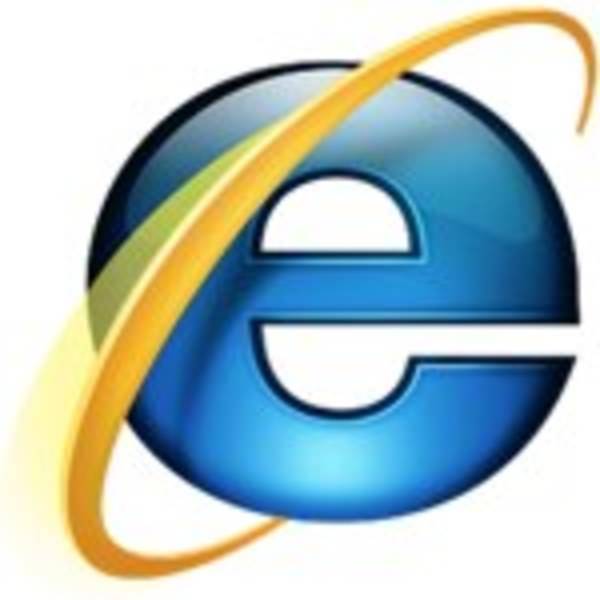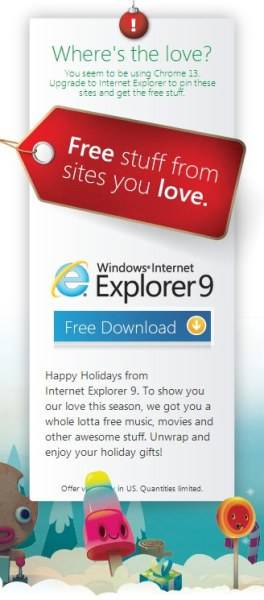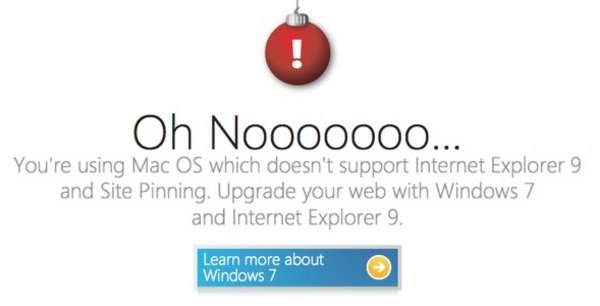Somewhere along the line, Microsoft went from being the 800-pound gorilla in the browser market to begging users to switch back to Internet Explorer. Now, Microsoft is running a “where’s the love?” campaign to offer “free stuff” for users who download IE9. After all these years, hasn’t Microsoft learned yet that it can’t buy love? Is the company capable of competing on features at all?

While IE may hold a lead over Firefox, Chrome and Safari individually, it’s trounced by the trio overall. Depending on which stats you believe, IE holds a very slim majority (50.9% according to Net Applications in September) or just more than a third of the market (35.5% according to Wikimedia in September).
So Microsoft is responding not by improving IE and making it a must-have for users, but by trying to spend the competition into submission. Microsoft is offering “gifts” for users who use IE9 to visit certain sites like Grooveshark, Hulu, Vimeo and Fandango. If you visit the IE9 Holiday Page from Windows 7 using Chrome or Firefox, you’ll get a come-on to upgrade. If you use something else, you’ll get a page telling you to go to Windows 7.
Money Can’t Buy You Love
Let’s say that Microsoft is successful in getting users to install IE9. That doesn’t mean that they’re going to stick with it.

It’s sort of ironic, but Microsoft is in the same boat that Mozilla and OpenOffice.org used to be in. (When OpenOffice.org was still a separate project.) Getting downloads is one thing, but converting users is another. If IE9 was compelling enough to get users to stick with it, Microsoft wouldn’t need to be offering additional incentives to download it.
In short: Awareness isn’t Microsoft’s problem, it’s much deeper than that.
What Microsoft Could Do
If Microsoft really and truly wants to compete, the company needs to do a few simple things:
- Innovate: Deliver features users actually want and care about.
- Convince Web developers: Internet Explorer is not the preferred platform for Web developers, and that hurts Microsoft plenty.
- Port Internet Explorer to Mac OS X: Deal with it Microsoft – you’re not the only game in town anymore.
- Stop Competing With Itself: Port IE9 to Windows XP.
- Speed Up Releases: The company should not try to emulate the Chrome/Firefox release cycle, but Microsoft’s release cycles are glacial.
Microsoft is shooting itself in the foot by simultaneously using IE9 as a lever to force people to Windows 7, and trying to entice people to IE9. Pick one. If I’m happy running Windows XP or Mac OS X, I’m not moving to Windows 7 just for IE9. If I’m happy with one of the other browsers, I’m definitely not moving to Windows 7. Microsoft misses out on an enormous audience that Google and Mozilla are more than happy to serve. By refusing to cater to Mac users or Windows XP users, Microsoft is conceding a huge chunk of the market.

Internet Explorer may have a feature here or there that’s not found in Chrome or Firefox, but really? It’s just not competitive. It doesn’t compete on speed. It doesn’t have the same breadth of extensions and add-ons as Chrome or Firefox. And while I’m sure that IE has introduced a feature or two before Chrome and Firefox, I’m struggling to think of any.
A big part of the problem is the glacial release cycle for IE9. It works in Microsoft’s favor when it comes to corporate IT, because enterprise admins are perfectly happy with software that changes slowly. But Chrome and Firefox have taught users to expect new features on a regular basis. IE9 offers little to capture users’ attention, and even less to hold it.
I’m also convinced that where Web developers go, users follow. Guess what? Web developers are not picking IE9. Sure, they use it to test sites, but ask a group of Web developers what their browser of choice is – it’s not going to be any version of IE.
Microsoft’s approach to IE9 adoption is one of the reasons many people think of Microsoft as a marketing company, not a tech company. The “let’s lure users to an inferior product” mindset is the epitome of the worst marketing practices. Rather than digging in and improving IE9 to make it a worthy competitor, the company is trying to buy market share.
It might work to shore up its market share, for a while. But in the long run? Microsoft has dug itself a hole it can’t buy its way out of. The only real way for Internet Explorer to reclaim its crown is for Microsoft to compete on features and deliver what users want. I know, that’s not Microsoft’s first choice of tactic but it’s the only one that works in the long run.










